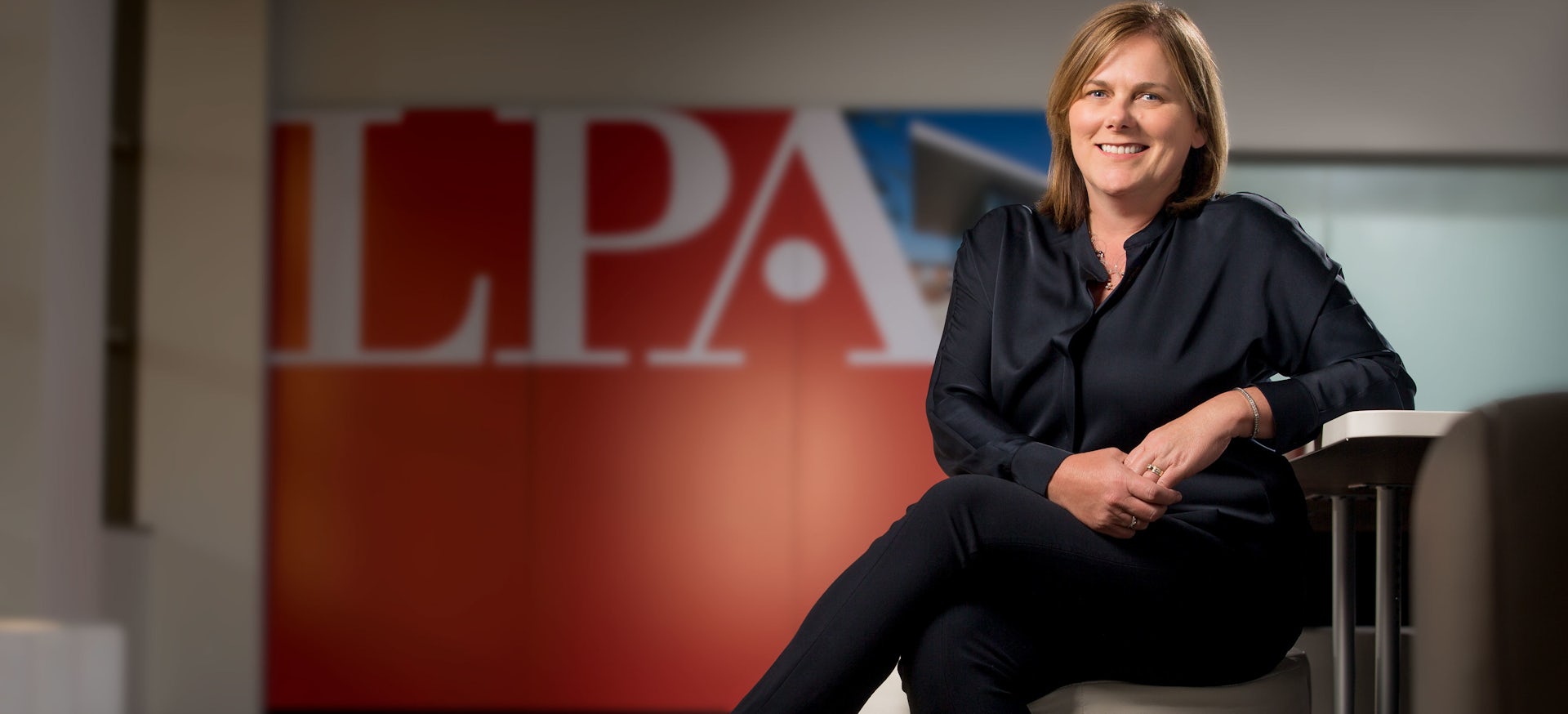By Hannah Madans
Irvine-based design firm LPA has named Wendy Rogers its chief executive.
Rogers, who started at LPA as a college intern in 1987, assumes the role from Robert Kupper who was CEO for 30 years.
Rogers is the firm’s second CEO in its 52-year history. Kupper, LPA said, will remain in an advisory role.
“Bob has helped instill a collaborative work ethic, focused on problem-solving and creating sustainable places that enrich lives,” Rogers said.
Rogers, a longtime principal at LPA, has held a variety of roles including her most recent post as chief talent officer, a position she held for two years. She started in company’s civic division before moving to schools, eventually overseeing K-12 design work.
In her new role, Rogers will work with LPA President Dan Heinfeld on the day-to-day operations of the company.
“Wendy has a strong sensibility that balances the business practice of the firm with the fundamental belief that design can change lives,” Heinfeld said in a statement. “These are exciting times at LPA, and Wendy’s collaborative leadership approach will be a catalyst in making our firm better.”
LPA, which was founded in 1965 by Leason Pomeroy III, has more than 380 employees. In April it opened an office in Dallas. The firm is the 34th largest in the country, up from 40th a year ago, according to Architectural Record’s list of biggest U.S. firms.
In Orange County, LPA’s work has touched dozens of big-name projects including John Wayne Airport, Tustin Market Place, Blizzard Entertainment’s Irvine headquarters and Asics America. Projects this year include Mazda’s new Irvine headquarters and work to refurbish Christ Cathedral in Garden Grove.
The firm, known for its focus on efficient and sustainable design, said its revenue has boomed in the post-recession economy, rising 20 percent since 2015.
Rogers spoke with the Register about her new role at LPA. Her answers have been edited for length and clarity.
Q: What’s notable about the firm since you started?
A: I can remember one of the first meetings I sat in. Our president, Dan Heinfeld, asked all the right questions about the project. As someone who came out of school, it was amazing seeing a company that had that value system that design matters. I am happy that I was able to contribute to that.
We also brought on landscape architects and engineers and that allowed us to bring better value to our clients through design. All of those disciplines under one roof made us better professionals and allowed us to design better buildings.
Q: How has the staff changed while you’ve been there? I understand you have more people in-house than ever before.
A: If you go from being the kind of firm we were when I started, a 30 person firm, to over 300 today, you are able to touch more projects and have a greater expertise. There’s more depth of experience and knowledge. You take this development of expertise and knowledge and that’s why you see the kind of growth we have.
Q: How has design changed since you started?
A: Design is about problem-solving. If you have the right intelligent, thoughtful people, you’re going to see good, high-quality design. You can look at some of the earliest projects we’ve done to some of the projects we’re doing today and you see that same level of care put into all of them. I don’t think the design process has changed. We’ve had that commitment to doing that and that’s never wavered.
Q: The firm is focused on sustainable design. What does that mean to you?
A: Sustainability is part of our DNA. We’re designing buildings that know where the sun is. We’re asking the right questions, so our clients get the most value out of their projects. If you have a sustainable approach to your design, you have projects that do more with less. We think about the long-term maintenance costs. We’ve always had a sustainable approach to design, we used to call it good design.
Q: What do you want to do differently as CEO?
A: One of the biggest opportunities we have is LPAred, a focus group within the company. There’s an energy analyst on board, a research analyst on board and people dedicated to managing our sustainable projects. It’s a resource for all our designers in the company. We’ve only had that in place for the last couple of years. It will allow us to change our work and track the metrics of our work. You can manage your work better when you understand how it’s performing.
Q: What are your plans for the company’s future?
A: I see LPA continuing to do the kind of projects that distinguish themselves in our community. There’s a level of care and quality in our projects and we want to be able to take that kind of problem solving to more people in California and Texas.














